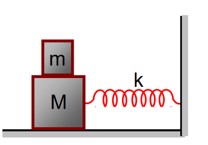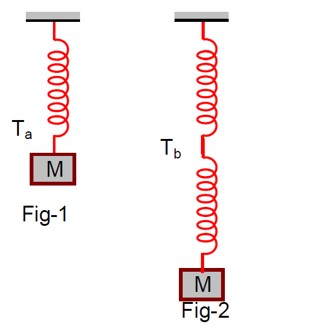14.16 Answer the following questions :
(a) Time period of a particle in SHM depends on the force constant k and mass m of the particle
T = 2 A simple pendulum executes SHM approximately. Why then is the time period of a pendulum independent of the mass of the pendulum?
(b) The motion of a simple pendulum is approximately simple harmonic for small angle oscillations. For larger angles of oscillation, a more involved analysis shows that T is greater than 2 . Think of a qualitative argument to appreciate this result.
(c) A man with a wristwatch on his hand falls from the top of a tower. Does the watch give correct time during the free fall ?
(d) What is the frequency of oscillation of a simple pendulum mounted in a cabin that is freely falling under gravity?
14.16 Answer the following questions :
(a) Time period of a particle in SHM depends on the force constant k and mass m of the particle
T = 2 A simple pendulum executes SHM approximately. Why then is the time period of a pendulum independent of the mass of the pendulum?
(b) The motion of a simple pendulum is approximately simple harmonic for small angle oscillations. For larger angles of oscillation, a more involved analysis shows that T is greater than 2 . Think of a qualitative argument to appreciate this result.
(c) A man with a wristwatch on his hand falls from the top of a tower. Does the watch give correct time during the free fall ?
(d) What is the frequency of oscillation of a simple pendulum mounted in a cabin that is freely falling under gravity?
-
1 Answer
-
(a) The time period of a simple pendulum, T = 2
For a simple pendulum, k is expressed in terms of mass, m as : k or = constant
Hence, the time period of a simple pendulum is independent of the mass of the bob. In the case of a simple pendulum, the restoring force acting on bob is given as F = -mg , where
F = restoring force
m = mass of the bob
g = acceleration due to gravity
(b) For small sin . For larger sin is greater than . This decreases the effective value of g.
Hence the time period increase as : T = 2 , where l is the length of
...more
Similar Questions for you
Velocity of block in equilibrium, in first case,
Velocity of block in equilibrium, is second case,
From conservation of momentum,
Mv = (M + m) v’
f? = 300 Hz
3rd overtone = 7f? = 2100 Hz
Kindly consider the following figure
K = U
½ mω² (A² - x²) = ½ mω²x²
A² - x² = x²
A² = 2x²
x = ± A/√2
Taking an Exam? Selecting a College?
Get authentic answers from experts, students and alumni that you won't find anywhere else
Sign Up on ShikshaOn Shiksha, get access to
- 65k Colleges
- 1.2k Exams
- 679k Reviews
- 1800k Answers


